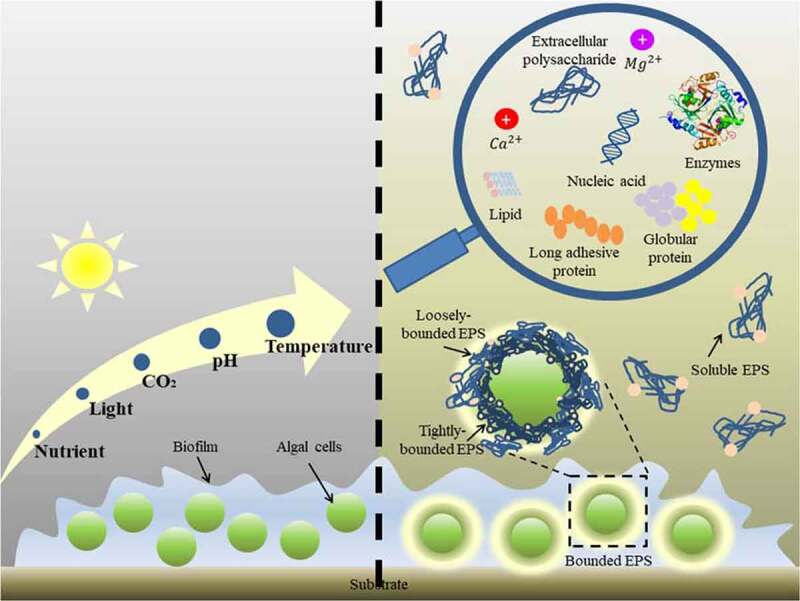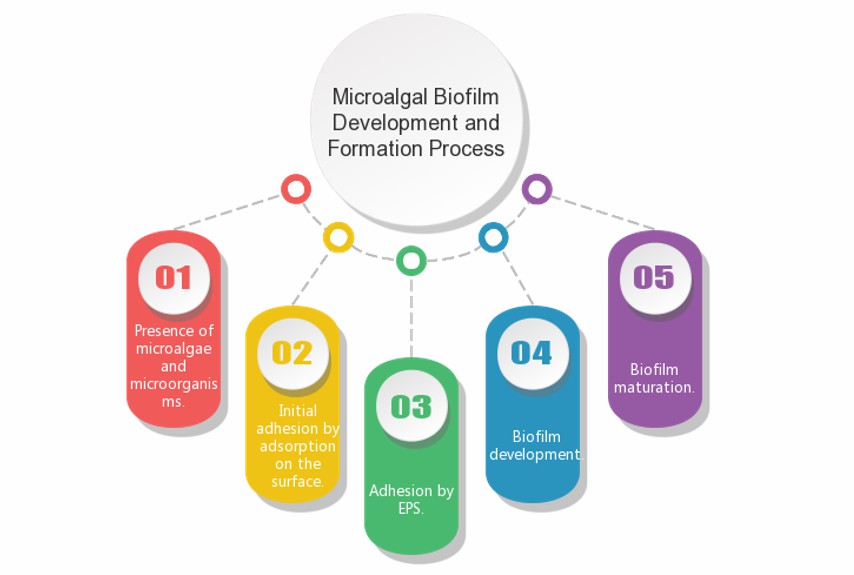Microalgae are a group of microorganisms with a wide range of potential applications. The growth of microalgae and other microorganisms on the material's surface allows the formation of microalgal biofilms, promoting the process efficiency of bioremediation. Here, Lifeasible offers specialized solutions for applying microalgal biofilms in wastewater treatment.
In many developing countries, intensive agricultural activities and rapid industrialization have led to increased wastewater production and scarce clean water supplies. In recent years, microalgae have been extensively investigated for environmental applications, especially as bioremediation agents, due to their strong adsorption capacity for inorganic nutrients and effective fixation of inorganic compounds, including carbon dioxide and heavy metals. However, the growth of microalgae by conventional suspension processes limits the process efficiency of bioremediation. The growth of microalgae attached to the material surface would be the best option for bioremediation or microalgae recovery for use as feedstock. Scientists are interested in studying a fundamentally different approach: the potential of using microalgae as biofilms for attachment culture.
 Fig 1. Schematic diagram of the microalgal biofilm and extracellular polymeric substance (EPS) structure. (Cheah YT, et al., 2021)
Fig 1. Schematic diagram of the microalgal biofilm and extracellular polymeric substance (EPS) structure. (Cheah YT, et al., 2021)
Microalgal biofilms are associations of microalgae, heterotrophic microorganisms, and other microorganisms embedded in an extracellular polymeric substance (EPS) matrix. Given the high energy costs and water consumption of microalgae culture, our scientists develop microalgae biofilm-based culture systems as a solution for a more sustainable and resource-friendly microalgae biomass production system. We offer customized processes for microalgal biofilm development and formation.
 Fig 2. The customized processes for microalgal biofilm development and formation.
Fig 2. The customized processes for microalgal biofilm development and formation.
As an innovator in microalgae research, Lifeassible offers comprehensive solutions for the design of microalgal biofilms. Depending on the biofilm carrier, we have successfully designed a variety of microalgae biofilm photobioreactors (PBR).
In addition, we use various forms of microscopy and chemical imaging techniques to characterize microalgae biofilms and to analyze the factors that influence microalgae biofilm formation and adhesion.
Our microalgae biofilm systems are widely used in wastewater treatment because they offer a simple, energy-efficient technology.
At Lifeasible, we can quickly design microalgal biofilms to absorb critical nutrients, nitrogen, and phosphorus and then easily and reliably separate algal biomass from most wastewater. We are your trusted partner in all aspects of microalgae research. If you are interested in our solutions, please do not hesitate to contact us.
Reference
Lifeasible has established a one-stop service platform for plants. In addition to obtaining customized solutions for plant genetic engineering, customers can also conduct follow-up analysis and research on plants through our analysis platform. The analytical services we provide include but are not limited to the following:
STU-CRISPR System Improves Plant Genome Editing Efficiency
April 19, 2024
Application of Exosomes in Facial Beauty
April 12, 2024